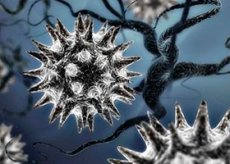New publications
WHO has again recorded a plague epidemic
Last reviewed: 02.07.2025

All iLive content is medically reviewed or fact checked to ensure as much factual accuracy as possible.
We have strict sourcing guidelines and only link to reputable media sites, academic research institutions and, whenever possible, medically peer reviewed studies. Note that the numbers in parentheses ([1], [2], etc.) are clickable links to these studies.
If you feel that any of our content is inaccurate, out-of-date, or otherwise questionable, please select it and press Ctrl + Enter.

The World Health Organization is preparing all necessary measures to stop the plague epidemic in Madagascar: the disease has already affected residents of the capital and port cities. In recent weeks alone, more than a hundred people have been infected with the plague. The authorities of Madagascar have already confirmed the death of one foreigner - a resident of the Seychelles: the athlete arrived on the island in connection with a basketball tournament, but fell ill with pneumonic plague and died in a hospital in Antananarivo. Doctors are finding out who of the people had contact with the deceased and could have been infected. All those identified will need to undergo a preventive course of antibiotic therapy. From the day of the plague outbreak until the end of this summer, more than two dozen people have died from the plague in Madagascar. According to preliminary data, more than a hundred people are infected. Dr. Charlotte Ndiaye, who represents the interests of the WHO in Madagascar, is worried about the current situation. "Groups of specialists have already visited Madagascar and are currently working on creating technical conditions for epidemiological control and cooperation with local organizations," the doctor says. "It is in our interests to do everything possible to stop the outbreak of the disease: including coordinating the work of all medical services and health organizations." Other WHO representatives have also arrived in the epidemic zone, as well as their colleagues interested in preventing outbreaks. In addition, supplies of antibacterial drugs, protective kits, masks and other means are being monitored. The World Health Organization has already sent Madagascar 300,000 US dollars in emergency funding for the anti-epidemic program, as well as a number of vital medical supplies. The task of doctors is to quickly comply with all necessary measures to prevent the further spread of the disease. Presumably, another one and a half million dollars will be allocated for further activities. PlagueIn Madagascar, the plague has long been endemic: the most common is bubonic plague, which is spread by infected rats through flea bites. Today, a combined epidemic is occurring on the island: approximately the same number of people are infected with bubonic plague and pneumonic plague. The pneumonic form of the disease is more contagious, as it is transmitted through direct contact between a sick person and a healthy person. Previously, the plague in Madagascar was recorded mainly in poor remote regions. Now the disease has come to large cities, which significantly expands the spread of the infection. Previously, it was believed that the plague is a disease of the lower classes. As a rule, the disease affected places with unsatisfactory sanitary and hygienic characteristics. If the plague is not treated, the patient will invariably die. However, if timely antimicrobial therapy is provided, the person can be saved. The last recorded surge in bubonic plague occurred last year, in a remote region of the island.
